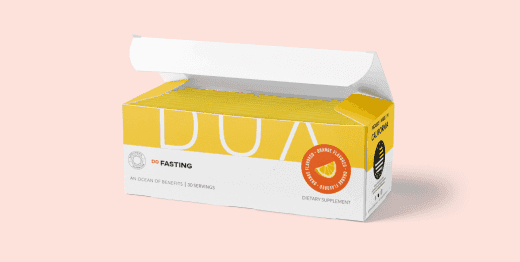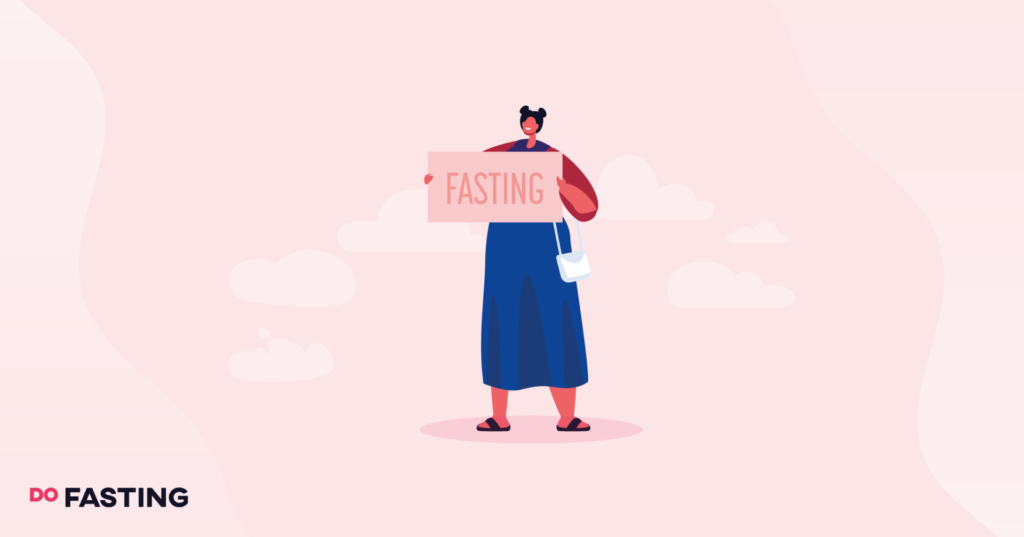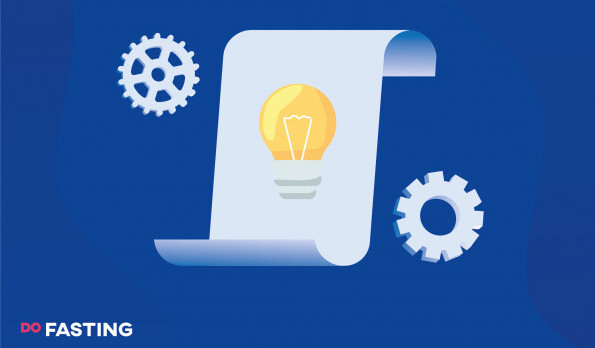Contents
8 Intermittent Fasting Tips
For some people, the idea of starting to fast can be quite daunting. However, if you go in with a solid foundation on how to fast, it makes it less overwhelming and you’ll be a pro in no time.
So, let’s begin with some of our top fasting tips and discuss a few of the intricacies of completing an intermittent fast.
Take a
1-minute quiz
and discover how much weight you can lose with DoFasting!
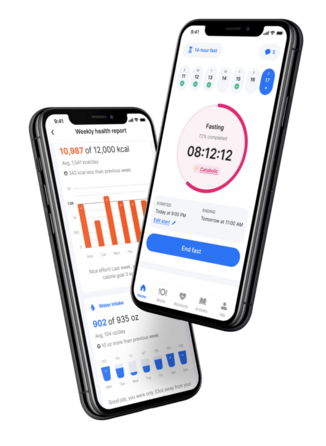
1. Pick a Correct Intermittent Fasting Plan
It’s one of the most important questions that many people who are new to fasting have – how long should you fast for?
Fasting periods vary, depending on the fasting program method and what works for your lifestyle. Popular regimens include fasting for 16 hours to 24-hour fasts, or even random meal skipping and alternate days of 500 calories.
It’s important to choose the right fasting period for your nutritional needs, health, and overall lifestyle.
But when it comes to longer periods and the potential health benefits of using this type of diet for a while, how long is it safe to fast?
In general, extended periods without food can be beneficial to your health but do need to be managed carefully and offset with a balanced diet. For those just starting out, a daily approach to fasting can be the best method, such as the 16:8 or 14:10 plans.
Doctors at the Johns Hopkins Medical center tout the effects of fewer calories that fasting involves and how it leads to “metabolic switching” and weight loss.
But they do recommend starting with smaller fasting periods and working up to the longer methods, as it takes the body about two weeks to get used to suppressed calorie intake.
If you listen to your body and monitor how you’re feeling with the amount of food outside of active fasting, you’re the best judge of how long you’re able to fast. Just don’t push yourself too hard, plan ahead, and discuss any possible health conditions in advance with your doctor.
2. Have a Meal Rich in Protein and Healthy Fats Before Fasting
Something that will help you start your fast right is eating an appropriate meal before fasting begins. Because your body will not be getting food for a period of time, it won’t get too much energy.
Thus, planning ahead and preparing a proper meal before fasting will mean you are less hungry and have more energy going into the fasting window.
So, how to prepare for a fast? It’s all about the right food and balanced choices. Luckily, we have plenty of great recipe ideas at the ready.
In general, stick to a meal that will keep you from being hungry only a few hours into your fasting time.
This should include protein-heavy choices and healthy fats – think beans, chicken, or bacon, paired with avocado, eggs, or nuts.
By eating these foods before your fasting window starts, you will find your endurance levels are elevated and that you can fast for longer without feeling terribly hungry or tired.
3. Include Whole Foods During Your Eating Window
It’s also crucial to include the right foods in your diet outside of your fasting time. Once you make it to your eating window, don’t just fill up on processed junk food.
Instead, opt for a variety of whole foods, including protein, healthy carbs, and good fats. You can find a handy list of fasting window-approved foods along with recipes right on our website, or via the DoFasting app.
By making good food choices outside of fasting, your meals can complement your diet and a healthy lifestyle, giving you the motivation and energy to get through the next fasting window much easier.
Take a
1-minute quiz
and discover how much weight you can lose with DoFasting!

4. Stay Hydrated
It should come as no surprise to you that water is key to fasting properly. By keeping hydrated, you can avoid a slew of issues, such as headaches, fatigue, irritability, and thirst.
Plus, there are so many health advantages that come with drinking more water, from better digestion to preventing kidney stones, so what’s stopping you?
Grab your favorite water bottle, fill it up, and try to meet the daily fluid requirements for men (15.5 cups) and women (11.5 cups). Your body will thank you for it!
5. Avoid Sugary Foods and Drinks
Another one of our top fasting tips is to avoid eating and drinking sugary things outside of your fast. This includes sodas, desserts, and candy bars, but also refined grains, processed items, and alcohol.
Because these food items are either high in sugar to begin with or turn into sugar after eating, your blood sugar will spike and then come crashing down mid-fast.
The false sense of energy you get from eating them ends quickly and suddenly you will be feeling hungry, tired, and weak. So, don’t fall into that trap!
6. Adjust the Intensity of Your Workouts
Exercise is another important part of completing your fast properly, especially when it comes to losing weight.
While it can depend on your individual abilities, exercise and an empty stomach are a great combination for burning fat and dropping pounds – more specifically, fasted cardio.
However, you need to be careful when adding exercise to your fasting regime, as things like high-intensity workouts before you fast can actually burn too many calories and deprive your body of the nutrients necessary to get you through the fasting window.
By focussing on a goal, such as building muscle or losing fat, you can tailor your workouts and plan ahead to ensure your workout timing doesn’t interfere with your fast or available energy.
For example, working out during or after the feeding window is safe for those who don’t want to push themselves on an empty stomach – so, complete low-intensity workouts during fast, and high-intensity during your eating time.
7. Continue Taking Medicine During the Fast
If you have health conditions that require medication taken with food, it’s absolutely crucial to follow medical advice and take it alongside an appropriate amount of food.
This sometimes means that people need to plan their fasts in accordance with when they need to take certain medicines, which can be frustrating, but always remember that your health comes first! Many medications are typically most effective when taken with a meal, so your eating window should always reflect that.
8. Ease Out of It
Breaking a fast the right way is one of the most important points of the diet.
And while it might seem tempting to have a large meal to satisfy all your cravings, it’s important to introduce calories slowly to prevent over-eating and discomfort.
Opt for nutrient-rich foods, soups, smoothies, and bone broth, and go slowly from there, and always listen to your body.
How to Get Through a Fast?
So, now that we have gone over some top tips on fasting prepared, how do you get through your actual fast itself?
It can be difficult to push yourself without food, and it’s common for people to feel discouraged if they’re unable to complete a fast, but that’s alright.
Endurance builds up over time and experience. Try these tips for getting through a fast:
- Stay Busy – Keep your mind active and don’t obsess over the clock during your fast. Staying busy makes the time go faster.
- Take Supplements – To defeat hunger pains and make yourself more comfortable, don’t forget to take supplements that won’t break the fast. DoFasting’s own supplement brand is a great option for this.
- Stop if You’re Unwell – If you are not feeling well and the fast is too much, it’s okay to stop early. Fasting is all about listening to your body and becoming healthier, so never push yourself past your limits.
Is Fasting for Everyone?
While fasting is safe for many people, this diet is not for everyone. For example, if you are dealing with certain medical conditions like high blood pressure, or you are breastfeeding, you might want to find other alternatives safe for you.
If any of the following relate to you, do not fast without seeking a professional for medical advice first:
- Blood sugar issues.
- Diabetes.
- Gastroesophageal reflux.
- High blood pressure.
- Insomnia
- Kidney stones.
- Pregnant or breastfeeding.
- Under 18.
Take a
1-minute quiz
and discover how much weight you can lose with DoFasting!

Conclusion
Starting your first fast doesn’t have to be a tough chore, if you know where to start, exercise, and have good meals. It’s time to put this knowledge to practice.
Are you ready to smash your fitness goals and track your weight loss? Check out the DoFasting app to get started and prepare to change your life for the better.
See how DoFasting will improve your life
Find out what works for you with this 60-sec quiz approved by our experts and get your personal revolutionary fasting assistant.
Start the Quiz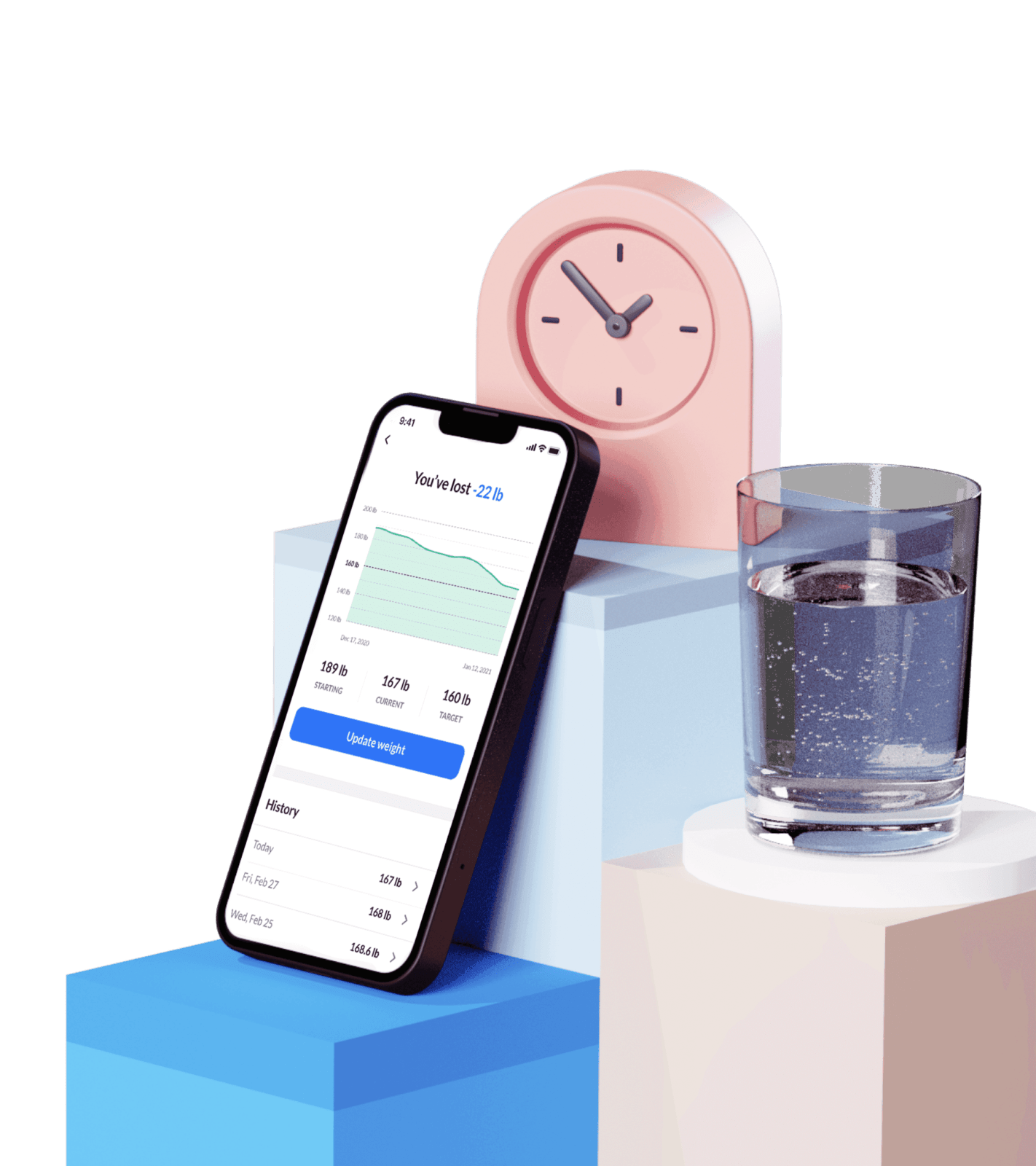
This is an evidence-based article that includes scientific citations. DoFasting’s professional writers and editors prepared the content, which a team of medical experts verified to be accurate.


